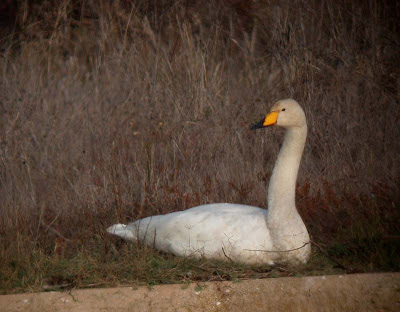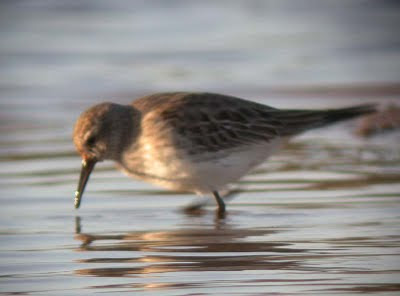
Note the extremly longish body-shape and the primaries extending well beyond the tail as well as bill-length compared to Little Stint, for instance.
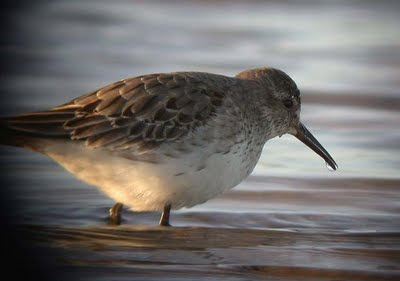
The brownish base of the lower mandible is an important feature to seperate the species from Baird's Sandpiper, wich could be the confusion species. Brownish cap and greyish neck indicating a juvenile bird. The bird is moulting into first winter plumage of course, but some chestnut-brown scapulars are still retained and the edges of most of the tertials are not showing this colour tone anymore but have been replaced by the white edged ones of the first-winter plumage.
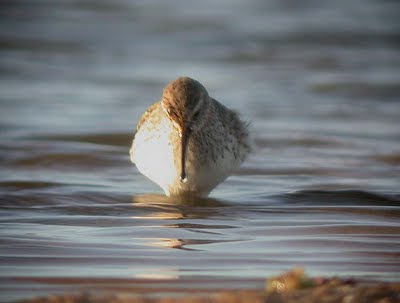
The body shape seen from the front would be broader on Baird's Sandpiper.
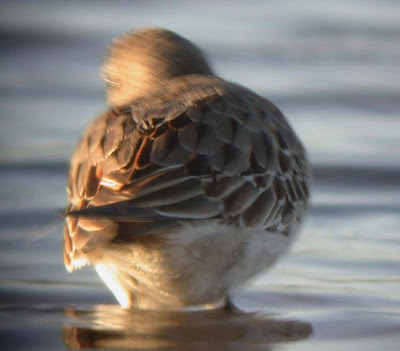
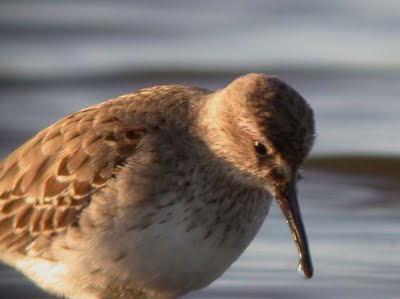
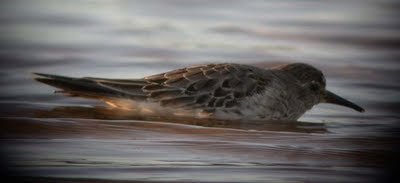
When a walker in a signal-yellow jogging-dress passed close by the waters edge on the opposite side of the very small lagoon, the bird showed a behaviour wich I have never seen any wader doing - it pressed itself down to the water-level and stretched out as much as possible, to hide from the approaching, potential threat. It was then holding this position for about 20 seconds or so ! Only coming out, when the danger had passed away. Amazing. It reminded me on a bevaviour, Little Grebes show in similar situations, when they hide themselves in the water, in an in-between position, between swimming and diving, and stay there, with only their head and a part of the neck above the water level.
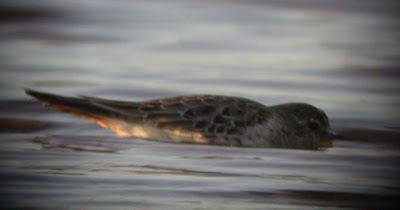
Note again how longish the bird is !

